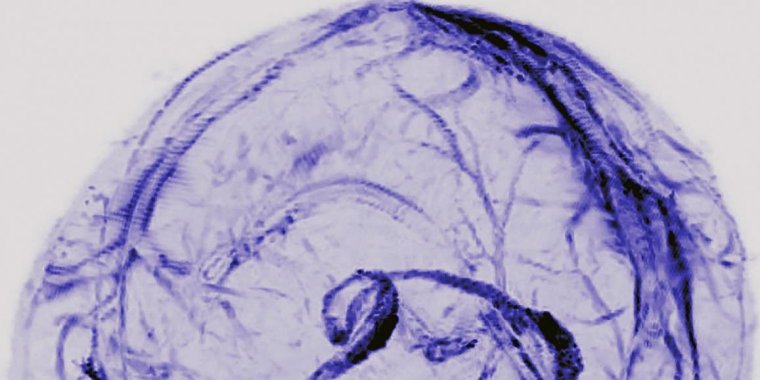| Health / Health News |
NIH researchers uncover drain pipes in our brains
By scanning the brains of healthy volunteers, researchers at the National Institutes of Health saw the first, long-sought evidence that our brains may drain some waste out through lymphatic vessels, the body’s sewer system. The results further suggest the vessels could act as a pipeline between the brain and the immune system.

A brain drainage system. Image credit: Reich Lab/NIH/NINDS
The team discovered lymphatic vessels in the dura, the leathery outer coating of the brain.
Lymphatic vessels are part of the body’s circulatory system. In most of the body they run alongside blood vessels. They transport lymph, a colorless fluid containing immune cells and waste, to the lymph nodes.
Blood vessels deliver white blood cells to an organ and the lymphatic system removes the cells and recirculates them through the body. The process helps the immune system detect whether an organ is under attack from bacteria or viruses or has been injured.
In 1816, an Italian anatomist reported finding lymphatic vessels on the surface of the brain, but for two centuries, it was forgotten. Until very recently, researchers in the modern era found no evidence of a lymphatic system in the brain, leaving some puzzled about how the brain drains waste, and others to conclude that brain is an exceptional organ.
Then in 2015, two studies of mice found evidence of the brain’s lymphatic system in the dura.
To look for the vessels, the team used MRI to scan the brains of five healthy volunteers who had been injected with gadobutrol, a magnetic dye typically used to visualize brain blood vessels damaged by diseases, such as multiple sclerosis or cancer.
At first, when the researchers set the MRI to see blood vessels, the dura lit up brightly, and they could not see any signs of the lymphatic system. But, when they tuned the scanner differently, the blood vessels disappeared, and the researchers saw that dura also contained smaller but almost equally bright spots and lines which they suspected were lymph vessels.
The results suggested that the dye leaked out of the blood vessels, flowed through the dura and into neighboring lymphatic vessels.
They also found evidence for blood and lymph vessels in the dura of autopsied human brain tissue. Moreover, their brain scans and autopsy studies of brains from nonhuman primates confirmed the results seen in humans, suggesting the lymphatic system is a common feature of mammalian brains. (National Institutes of Health)
YOU MAY ALSO LIKE



